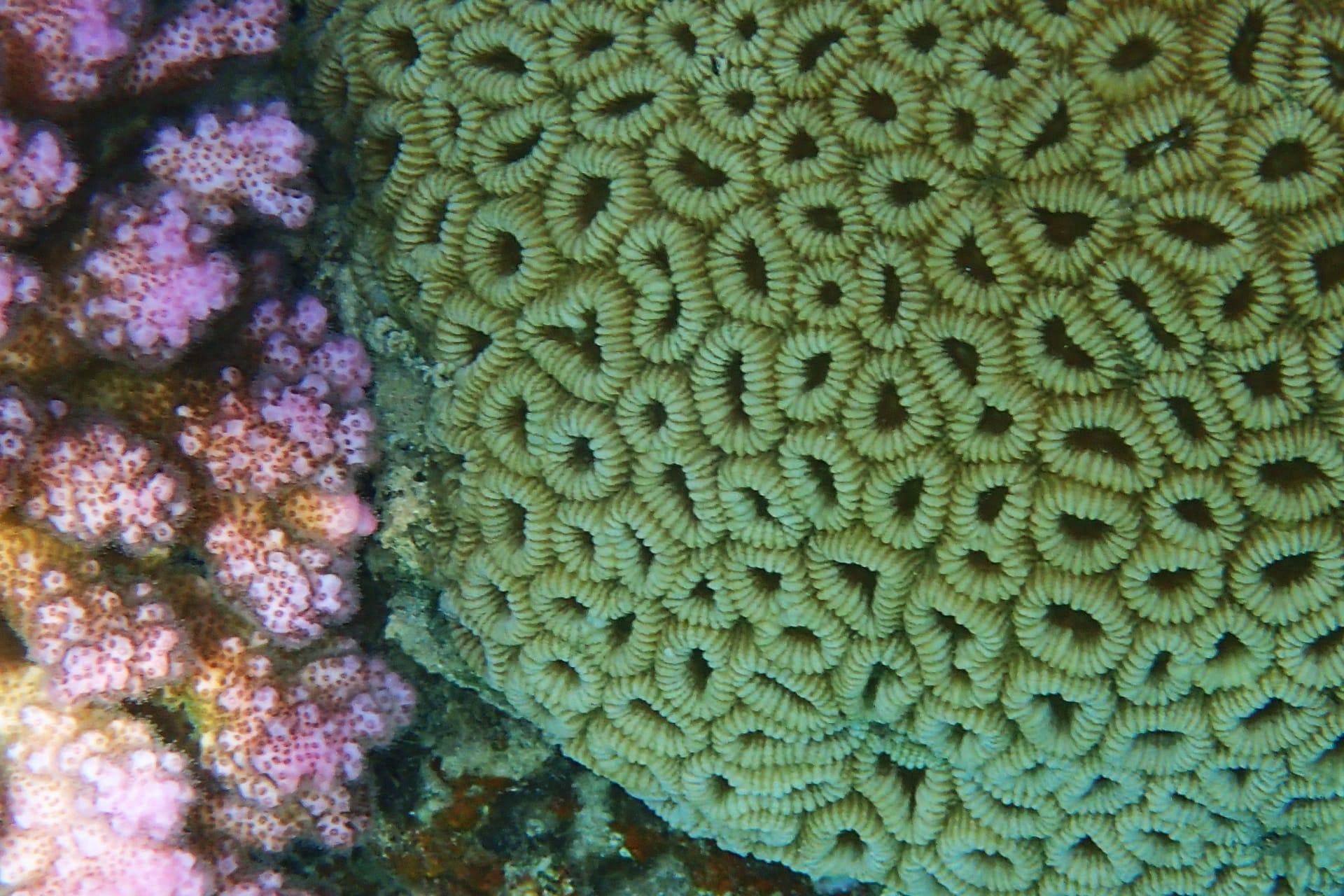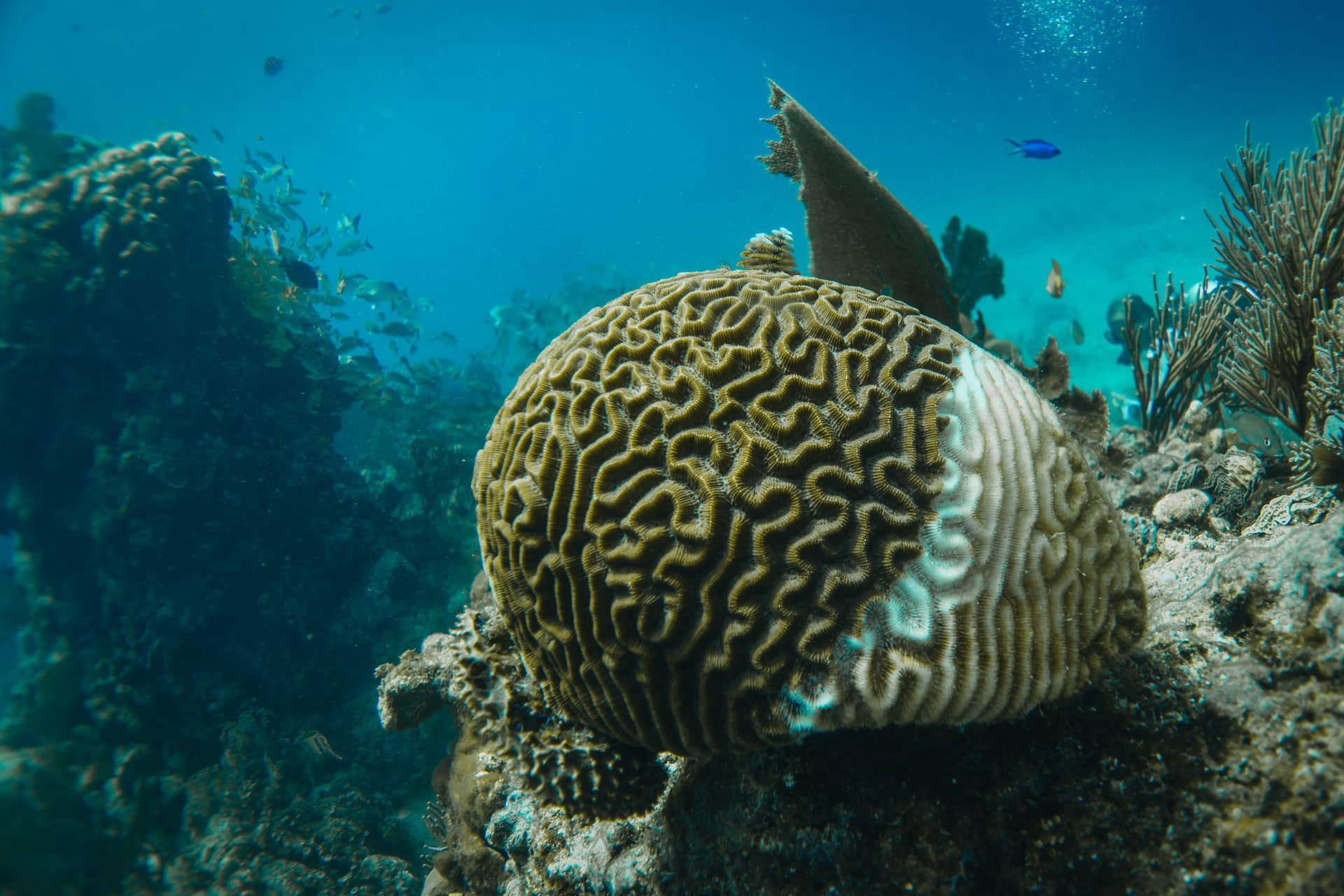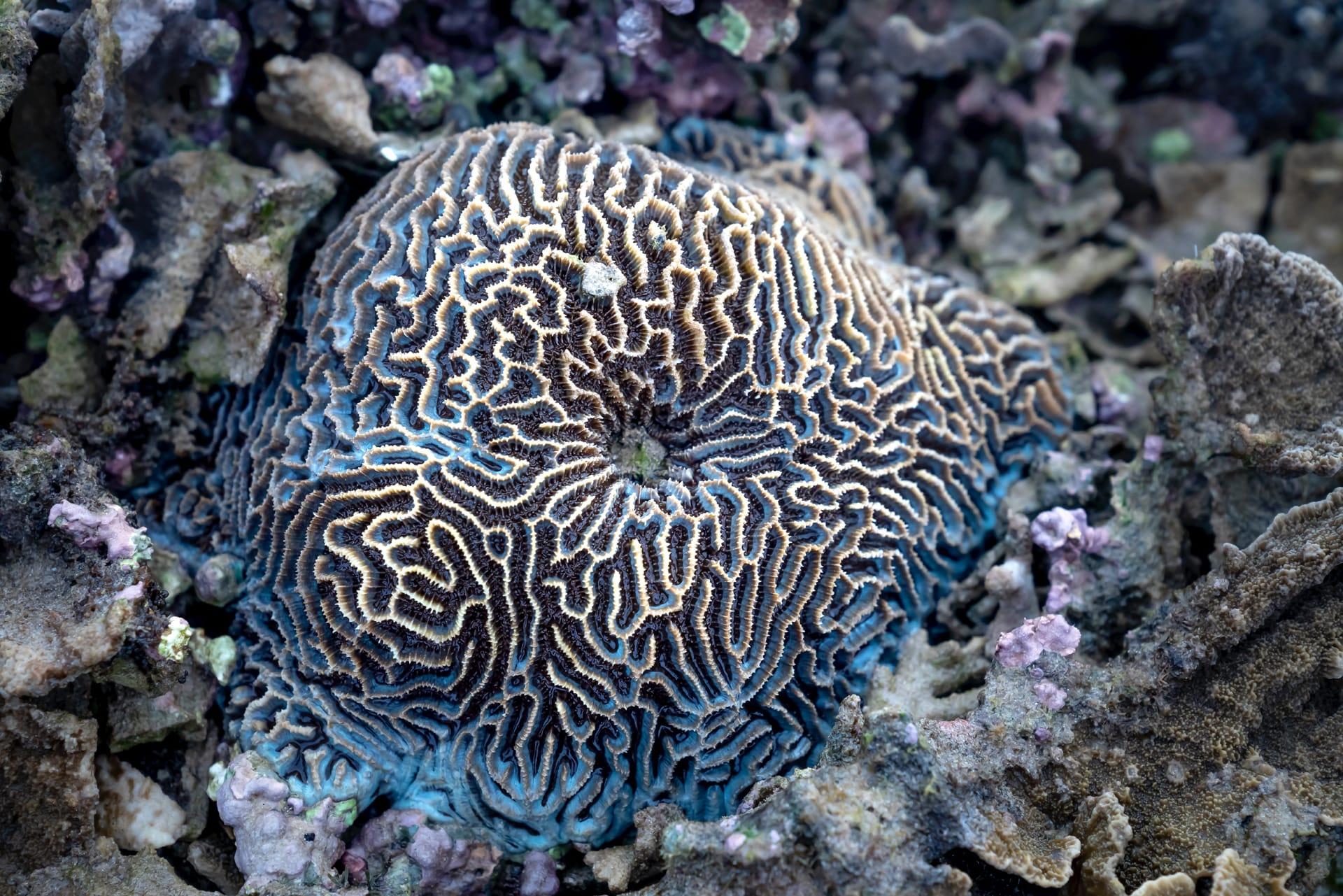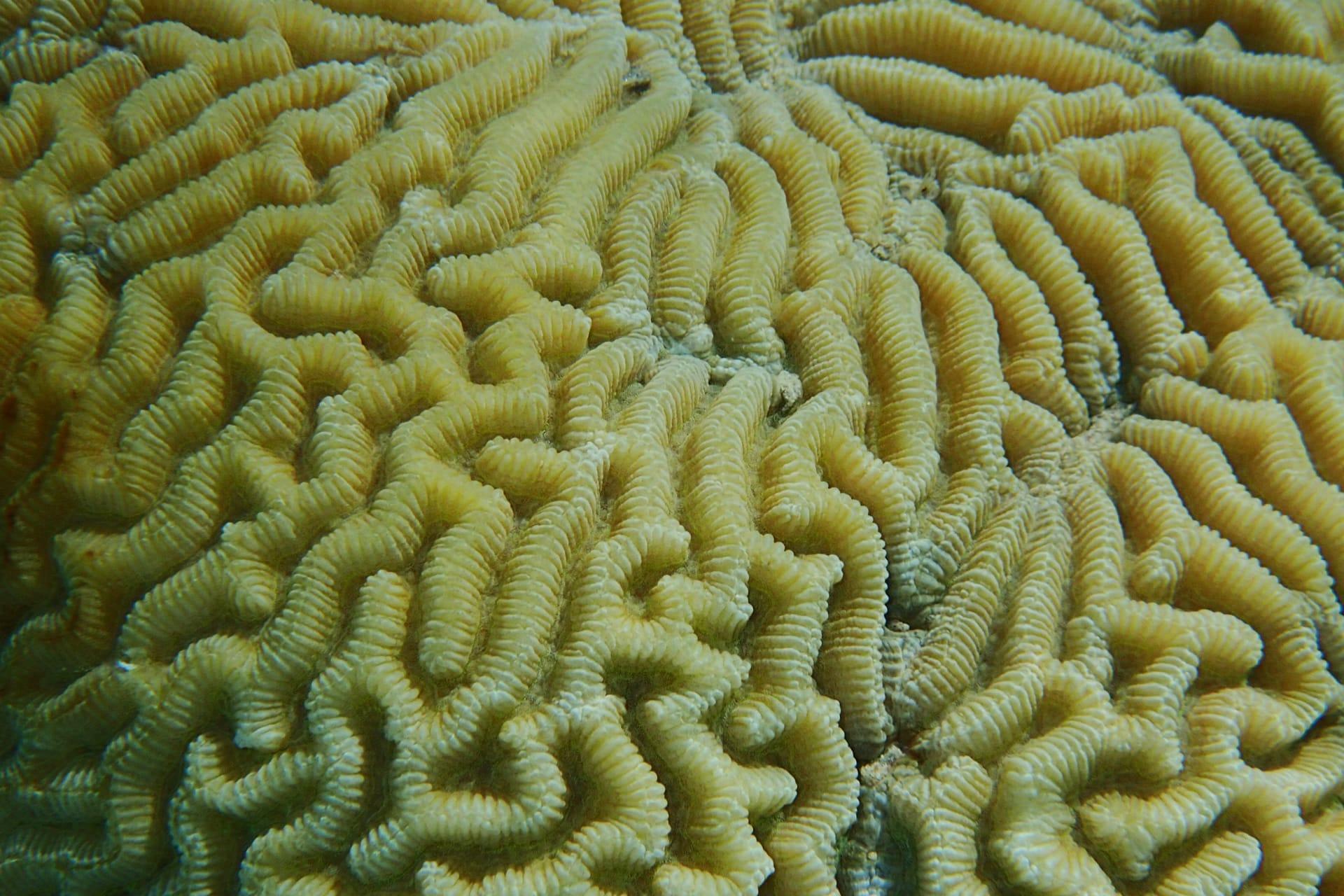Brain Coral Characteristics
- Home /
- Mini Encyclopedia /
- Animal /
- Brain Coral Characteristics
1
Brain Coral, scientifically known as Diploria labyrinthiformis, showcases a distinctive grooved surface resembling a brain's convolutions. This hardy coral species can reach a remarkable size, often growing up to 6 feet in diameter. Its lifespan is equally impressive, with some specimens living for more than 900 years. These longevity champions of the coral world demonstrate resilience and continuity in marine ecosystems.
One of the most unique organs in Brain Coral is its polyp. Each polyp, a tiny, tentacle-bearing individual organism, works collectively to form the larger coral structure. These polyps have a dual role. They are vital for feeding, capturing plankton and small particles from the water using their stinging tentacles. Additionally, they play a central role in the coral's growth by secreting calcium carbonate to build the hard coral skeleton, contributing to the reef's structural complexity.

2
Question: What influences the growth rate of Brain Coral?
Answer: Brain Coral's growth rate is influenced by several factors, including water temperature, light availability, and water clarity. Optimal growth occurs in water temperatures ranging from 73 to 84 degrees Fahrenheit. Adequate sunlight is essential for the symbiotic algae living in the coral's tissues, which provide essential nutrients through photosynthesis. Clear water allows more light penetration, fostering better growth. However, growth is slow, with an average rate of about 0.3 to 0.4 inches per year, underscoring the importance of conserving these long-lived marine structures.

3
While Brain Coral may appear stationary, it displays subtle movements vital for its survival. The coral's polyps can extend and retract, a slow and almost imperceptible motion. This movement is crucial for feeding and self-cleaning, allowing the coral to maintain its health and efficiency in nutrient absorption.
For feeding, Brain Coral uses a fascinating method called "suspension feeding." The polyps extend their tentacles, primarily at night, to capture plankton and tiny organic particles floating in the water. These tentacles are equipped with nematocysts, specialized cells that can sting and immobilize prey, making them efficient feeders in the nutrient-sparse ocean waters.

4
Brain Coral thrives in warm, shallow marine environments, typically found in reef systems at depths of 3 to 30 feet. These corals prefer areas with moderate to strong wave action, which aids in nutrient delivery and removal of sediments. The clear, sunlit waters of tropical and subtropical regions, like the Caribbean Sea, are ideal for their growth and health.
Reproduction in Brain Coral is a spectacular display. They primarily reproduce through a process called "broadcast spawning," where corals synchronously release eggs and sperm into the water column. This usually occurs once a year, often in summer, triggered by lunar cycles and water temperature. The fertilized eggs develop into free-swimming larvae, which, after settling on a suitable substrate, start forming new coral colonies, continuing the cycle of life on the reef.

5
Book: "Coral Reefs: Cities Under the Sea" by Richard C. Murphy. This comprehensive book, published in the United States in 2002, delves into the intricate world of coral reefs, including a section on Brain Coral. Murphy, a marine biologist, offers insights into coral biology, ecology, and conservation, making complex scientific concepts accessible to all readers.
Book: "The Enchanted Braid: Coming to Terms with Nature on the Coral Reef" by Osha Gray Davidson. Published in 1998, this book offers a journey through the complex and colorful world of coral reefs, including Brain Coral. Davidson, an American author and journalist, combines scientific information with vivid storytelling, highlighting the beauty, importance, and fragility of coral ecosystems.